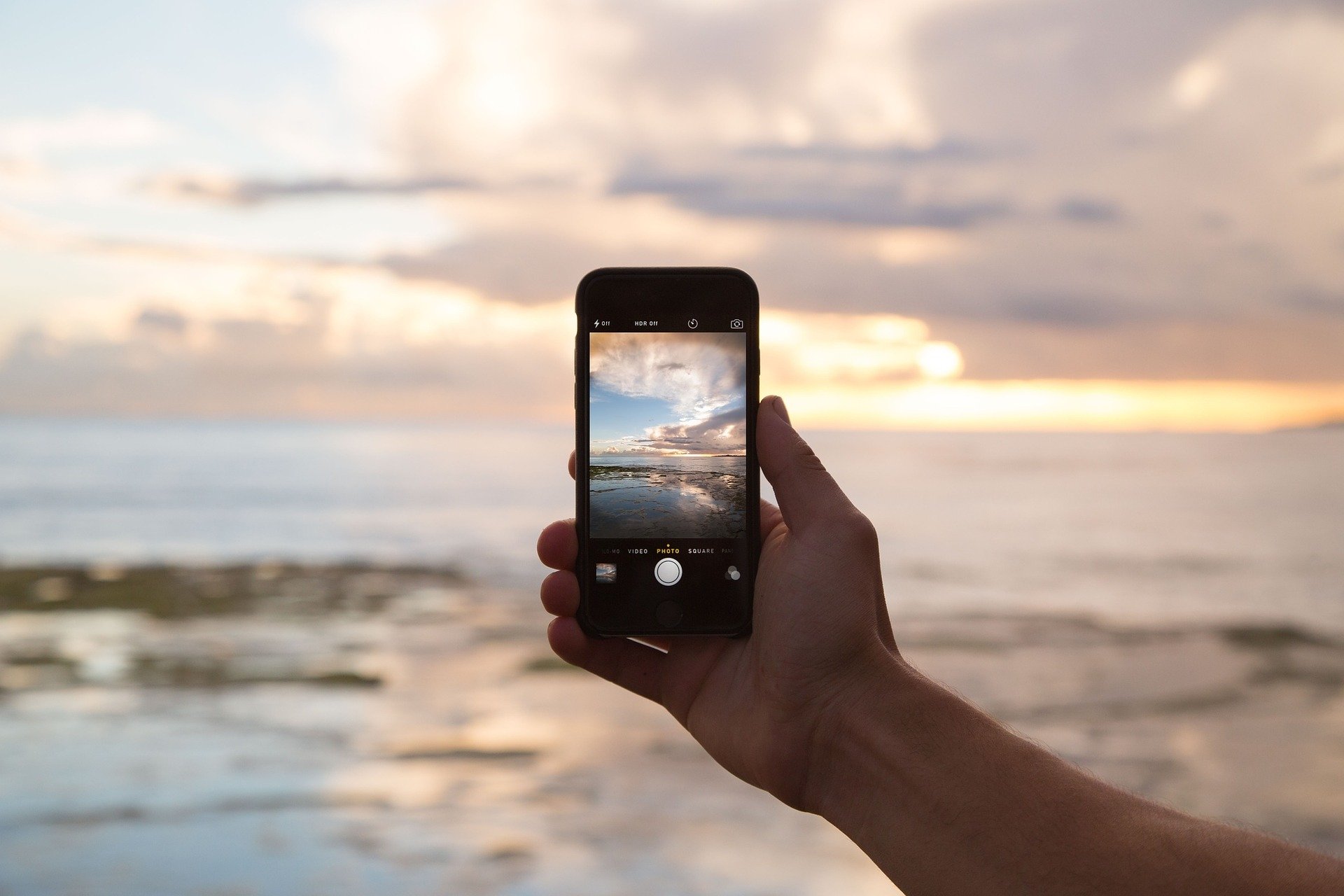Samsung Galaxy S21 Ultra
S21 is Samsung’s latest phone in demand and it is arguably the promising android smartphone that you can bring right now. If we talk about how it fluctuates from other galaxy phones, it has a reasonable processor, camera and you can also get a pen as an elective accessory which you could only receive in note series.
Samsung has shifted from concave displays from last year to flat displays in the latest s21. It can be nice and terrible relying on your intention. But screen resolution has broken the spell from last year’s but it is not visible to naked eyes but Samsung did it to bring costs low.
Vivo X50 Pro
While costing significantly more, the Vivo X50 Pro shows a gimbal camera stabilization operation, a first of its kind in a smartphone. It helps balance the videos and still shots, by equalizing the activity of your hands. The Vivo X50 does nicely on the camera and design screens, but a ton of other specifications originate in phones which are half the price like the OnePlus Nord. The beauty characteristic of this model is the gimbal camera technology. For bloggers and social media influencers, this phone should be a great choice.
OnePlus 8 Pro
The back cameras of Oneplus 8 Pro bring a big improvement. The primary 48-megapixel camera captures relatively good features and colours under most lighting situations. The wide-angle camera also shoots incredible images and can perform ultimate close-up photos. The telephoto camera is decent also, and virtually as par with the Samsung Galaxy S20+ in times of quality.
iPhone 12 Mini
In iPhone 12 mini, you will receive practically all the identical flagship specifications as with the iPhone 12, except a smaller battery and passive wireless charging. The display is smaller but simply as dense, and quality is terrific. Performance is also extraordinary, however, this phone gets a bit hot when working for long hours. The iPhone 12 mini can put up with gorgeous pictures in the daylight and at dusk with both its back cameras and the front one as well. Night mode is assisted across all cameras.
Vivo V20
Vivo V20 has a triple camera configuration at the rear consisting of a 64-megapixel main camera, an 8-megapixel ultra-wide-angle camera that is also competent for macro shots and a 2-megapixel monochrome camera. At the screen, it has a 44-megapixel selfie shooter that clicks high-resolution selfies. Camera operation was good in the sunlight. The low light camera performance was average and the Night mode did not deliver a brighter output but it did offer better details.
Vivo V20 Pro
The Vivo V20 Pro boasts of impressive camera specifications. For selfies, you get a 44-megapixel primary camera with an f/2.0 aperture and autofocus, and an additional ultra-wide-angle 8-megapixel camera. Compared to the OnePlus Nord, the V20 Pro offers slightly sharper selfies and more fascinating shooting modes, however, the Nord does have a slight perimeter when it reaches video processing.
Motorola Moto E7 Plus
The Moto E7 Plus has a dual-camera format with a 48-megapixel basic camera and a 2-megapixel depth sensor. It provides good camera performance in the sun but the action is average in low light. The light mode performs a much better job in soft light.
Realme 7
The recent main back camera in the Realme 7 shows a striking modification in pixel-binned images, correlated to the Realme 6. It displays enhanced vibrant colours and exposure, with better features too. Low light photos look perfect too, with less grain. Pictures captured using Night mode look more pleasing, describing what the Realme 6 can develop. The Realme 7 smartphone can shoot videos up to 4K, but without stabilisation. Colours are a bit on the softer side.
Realme 7 Pro
The back cameras on the Realme 7 Pro comprise a 64-megapixel Sony IMX682 rear camera, an 8-megapixel ultra-wide-angle camera, a 2-megapixel abyss camera, and a 2-megapixel macro camera. Normal photos put up within daylight generally looked promising. HDR was conducted well, components were good, and colours looked realistic. Low-light images were satisfactory, without much noticeable grain quality, and features were relatively nice even in darker areas.
Samsung Galaxy M51
Samsung has moved with a quad-camera configuration on the Galaxy M51 including a 64-megapixel main camera, a 12-megapixel ultra-wide-angle camera, and macro camera and a depth sensor. The camera clicked nice pictures in daylight with substantial details. Photos clicked utilizing the wide-angle camera have distortion at the perimeters. Video recording records at 4K for the primary, as well as the selfie camera but video stabilisation, does not perform well.
Motorola Moto G9
The Moto G9 gives a triple camera configuration including a 48-megapixel main camera with an f/1.7 aperture, a 2-megapixel macro camera, and a 2-megapixel depth sensor. It clicks good photos in natural light with sharp details. It is skipping a wide-angle camera that most of its competitive companies don’t perform. The macro camera is favourable but it is of an inadequate resolution. Dim Light camera performance was normal but the Night Mode is very beneficial.
Motorola One Fusion+
Motorola One Fusion+ has a quad-camera configuration with a 64-megapixel main camera. It regulates decent photos in sunlight and facilitates HDR automatically in bright panoramas. The macro camera also provides good results. In soft light, the camera execution is intermediate but it is improved drastically with night mode option enabled.
Realme X3 Super Zoom
The Realme X3 SuperZoom promotes a periscope-style telephoto camera, which is the first we’ve noticed at this rate. The 8 MP telephoto camera shows 5x optical zoom and a limit of 60x hybrid zoom. Camera execution is very nice during the sunlight, but not so much at night time. To benefit from the latter, there’s also the Night Mode option, which is entirely significant. The main 64-megapixel camera takes delightful photos in daylight but clashes a little in dim light. The X3 SuperZoom can document video at 4K and the quality of the video is reasonable in the sunshine but can do better when capturing at night.
Vivo V19
Vivo V19 has a quad-camera configuration at the rear and a dual-camera design for selfies. They originate from the camera performance to be good and the software simple to operate. Daylight time camera operation is nice and the mobile phone supervises good edge detection in picture shots. Less light camera execution is positive but capturing in darkness mode is slow.
Redmi Note 9 Pro max
The quad-camera configuration on the Redmi Note 9 Pro Max is adequately better than the Redmi Note 9 Pro in resolution. The phone takes good snapshots during the day but it gives a sharp outcome. In low-light, it organizes to maintain noise in check but the dark(night) mode performs a far promising job. The Redmi Note 9 Pro Max performs an extremely good job in sunlight, low-light execution results in a shimmering effect.
Oppo Reno 3 Pro
Oppo Reno 3 Pro contains a quad-camera format at the back design including of a 64 mp primary sensor with an f/1.8 aperture, a 13-megapixel telephoto camera, an 8-megapixel ultra-wide-angle camera with a 119-degree area of view, and a 2-megapixel mono camera. On the front display, this phone has a 44-megapixel selfie camera along with a 2-megapixel depth sensor. It creates the photo characteristic to be decent in the day time and normal in less light situations. The Reno 3 Pro has a dark mode that enables it to take a better shot at night. Less light video making is slightly disappointing.




